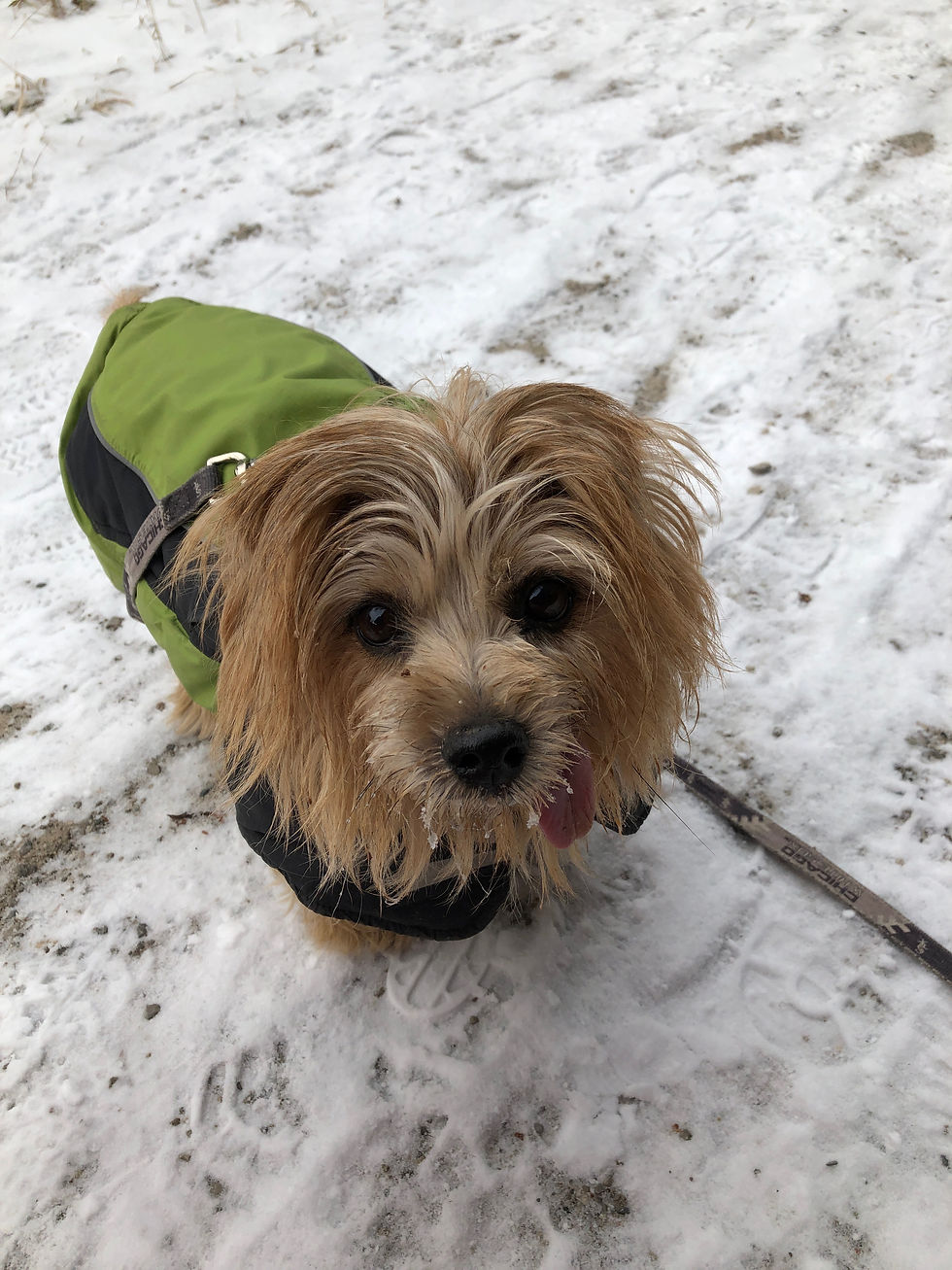As the temperature drops and the snow begins to fall you may find yourself asking the question - does my dog really need a winter coat or boots? While dogs do have natural defences in place to help them combat the cold more efficiently than us humans (such as fur coats and countercurrent heat exchange in the paws), this may not always be sufficient to keep them safe, warm and comfortable in sub-zero temperatures.

Suiting Up:
Breed and Coat: Breeds with short or thin coats (Ex: Boxer, Bulldog, Chihuahua, Great Dane Terriers, etc.) are less efficient at retaining heat than those with long or thick coats and as such can likely benefit from additional insulation provided by a coat or sweater. Breeds that are small and low to the ground (Ex: Corgi, Dachshund etc.) may also enjoy the extra warmth of a coat, as their stomachs are more likely to rub up against the snow and ice. On the other hand, double coated breeds (Ex: Husky, Malamute, Pomeranian, Saint Bernard) are genetically outfitted with a superior insulation system that deflects water and traps heat - these breeds generally do not need a coat and wearing one would likely be uncomfortable and could potentially lead to overheating.
Health, Age, and Body Condition: Dogs with medical conditions, especially those with endocrine issues impacting hair growth (Cushing's Disease, Hypothyroidism) may want the extra warmth that a coat would provide. Senior dogs and puppies can benefit from coats due to factors like arthritis, weakened immune systems, and little body fat. Lean breeds (Ex: Greyhound, Whippet) and underweight dogs definitely require extra insulation to help keep warm in cold temperatures.
Weather and Acclimation: It is important to consider the weather, duration of time your pet will be outside, and the activity level. Most dogs typically will not need a coat for a 10 minute pee break in the yard, but may however benefit from some extra warmth if going on an hour long hike. If you are going on an hour long run, your dog may not need a coat at all as they will generate more of their own heat. Also consider how well acclimated your dog is to the weather you are experiencing. For example, if your dog has grown up in the area and spent lots of time outdoors they may not need a coat, but if you have recently moved from a warmer climate to a colder one they may not be used to the weather yet and feel cold and uncomfortable.
Some signs that indicate your dog may benefit from a winter coat or sweater include:
They are reluctant to go out in the cold weather
Shivering
Body is cold to the touch
When choosing a coat or sweater focus on fit and material. You will want a coat that covers them from neck to tail and covers the belly (where there is little fur). You want to make sure the fit snug, but that mobility is not restricted. Think about choosing lightweight (fleece), waterproof (DWR coated), and reflective materials for mobility, warmth, and safety.

Booting Up:
Paw Hair: Breeds and individual dogs with long hair between the paw pads and toes can benefit from boots to prevent the melting of snow between the pads and the formation of ice balls which can be uncomfortable or painful to walk on. Keeping the paws well maintained (fur and nails trimmed) can help with this.
Location of the Walk: Boots are perhaps most useful for helping keep chemicals and irritants (think salt and antifreeze) off of your dogs paws and out of their mouth (when they later lick their paws). If you are going for a walk in the woods your furry friend will likely be fine without boots, however if taking a walk around the neighbourhood sidewalks you may want to consider boots for protection.
Weather and Temperature: Consider boots when the snow is fresh and wet - this can cause sticking, melting, and freezing between the paw between paws to occur more easily. Boots may also be necessary if you plan to be in freezing temperatures for a prolonged period of time as the extremities are most prone to frostbite.
Some signs that indicate your dogs may benefit from boots include:
picking up of paws
frequent stopping to chew/lick at paws
limping
When choosing boots there are a variety of options including thin rubber (to help dogs with being able to feel the ground beneath them), soft-soled (for more warmth, protection, and flexibility), hard-soled (for the most protection and traction). If your dog is simply against boots you can also consider a paw wax that will provide protection without the restriction.
Final Verdict - You Decide!
Some dogs need coats or boots and some do not - you know your dog best and only you can decide how to keep them safe and comfortable! Just remember to always monitor your dog's tail, ears, paws and nose for frostbite in freezing temperatures and that for some staying indoors is the best option - and that's okay too!

Comments